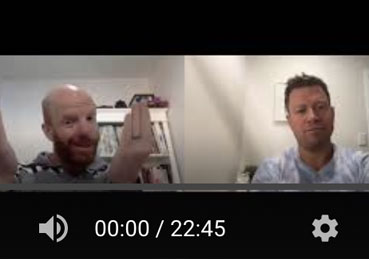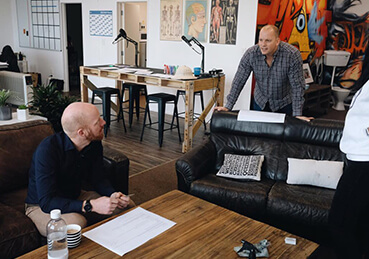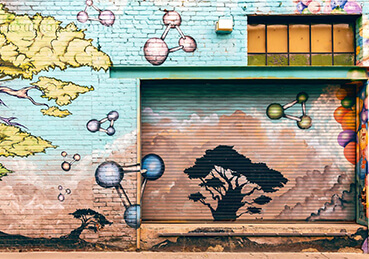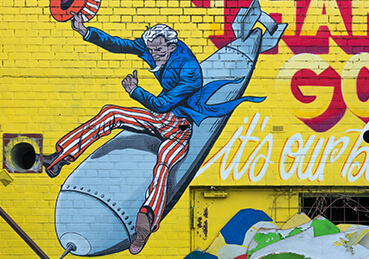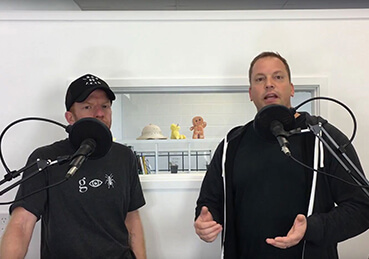At the ripe old age of 40, I have had the privilege of living life pre- and post-Internet. But it’s only recently that I have become aware of its impact on the way we now live.
Over the past few months we have been thrown into the unknown – not just in technology, but in every aspect of our lives – creating unprecedented levels of anxiety as we come to grips with the fragility of the way we live and how quickly it can come undone.
Many parents will probably identify with the fact that the most enlightening lockdown experience for me was the adoption of technology by my seven-year-old daughter. We did the working from home thing fairly easily for our business, including setting up a workstation for my daughter to get involved with the day-to-day of running a business in lockdown.
At first, she took a tentative approach to the blended learning between digital resources and printed worksheets. But as the weeks rolled by her ability to access, download and deliver seamlessly between the digital and real-world was amazing.
I can’t imagine I was so adaptable in the early days of my exposure to the Internet and technology.
This is where the rubber hits the road for me; when we look at the way businesses need to look at their digital strategy and we embrace the ‘new normal’, where does humanity sit in our decision making.
Depending on where you sit in the past few months and the part that technology has played, you might be a bit concerned. However, that’s not the case with Zoom right now, who’ve been the recipients of the most extraordinary uplift in demand for their product – albeit mostly for free. The company allegedly lifted their user base from 30 million to 200 million in a matter of weeks.
That’s great for Zoom, and clearly Zoom has been a piece of technology that has kept many people connected to family and colleagues – while out in the real world we were trying to figure out exactly how this was all going to play out!
Then along came all of the articles and courses on how to use Zoom effectively for remote working, including the crying child in the background and the barking dog wanting to be let out. But just as quickly the articles changed to the impact of being in relentless Zoom meetings for what seemed to be needless meetings and wellbeing check-ins, as well as the technology’s impact on wellbeing and productivity.
Don’t even get me started on the role the big brands played when it came to communicating through their advertising, clunky chatbots, and poorly crafted email communications.
You see, for me, these are just all tools and they only work if they are contextual and ultimately enhance human connection and the ability to communicate.
In one very poor experience with a significant telco, I wanted a number for their local store. Simple, you would think? Nope.
Their automated service didn’t provide that option, so I went to Facebook, to their chatbot. The bot didn’t understand my request and after several attempts to ‘game the tool’ it gave up on me and sent me to another messenger tool. It all appeared pre-programmed to waste my time with dumb questions in what seemed to be a sales strategy from the ‘80s.
This is where I became rather childish – copy and pasting the question over and over to try and get a simple response, a phone number to speak to a human (yes, you heard me, in these times of digital connection I wanted to speak to an actual human. This is where it all breaks down for me).
We have these incredible tools in all aspects of our lives, and in some cases they enhance life; they make life easier, cheaper and more efficient. But so many companies get so obsessed with the technology they lose sight of the end goal: serving their customers.
“Taking away the human element from your digital strategy takes away the very thing that will create loyalty and opportunity – real connection.”
Human cravings
When it came time to decide whether we were going to return to our office, for myself and my team it was an overwhelming ‘Yes!’ Not because it was easier for us all, but the fact is, we missed each other and we craved human interaction – those moments that spark a conversation, and sending an email to prompt a colleague to jump on Zoom to chat just didn’t deliver.
Or those bump moments and whiteboard sessions that yield the ‘ahah’ moments that only humans – in physical presence – can create.
So, what has this got to do with your digital strategy and humanity?
Well, it’s pretty simple. In every single part of your business, no matter how big or small, your team, suppliers and customers will be interacting with some sort of technology enhancement that is there to create efficiencies and make life easier.
But it’s not the technology that needs the most attention; it’s the way it impacts on the user’s life, the humans. Because taking away the human element from your digital strategy takes away the very thing that will create loyalty and opportunity – real connection.
Digital strategy audit
So, as you move through the ‘new normal’, or whatever label we are using today, take a moment to take a quick audit of your digital strategy, and how it does indeed support and enhance humanity rather than remove it:
- Does your campaign speak to your audience as humans, not data points?
- Do your internal digital tools encourage or discourage innovation and creativity, or does it reduce your staff to input agents?
- Will a Zoom meeting suffice or, to give real value to the relationship, will meeting in person build a greater connection?
- Does your technology provide value at all points of the digital relationship?
- Do you believe that a bot will give a greater customer experience than a well-trained and engaged person?
- Does your digital strategy take into account the addictive, and therefore dangerous, nature of some platforms and therefore put your customers at risk?
Don’t get me wrong I am a huge fan of the role that technology plays in our lives and the privileges that it gives us. But let’s not lose sight of the lessons that should have been learned over the past few months – that our unique ability to connect on a human level should not be underestimated or undervalued just because technology can do it cheaper and quicker.
Once we lose sight of that, we lose sight of what humanity is. People.
Originally published in NZ Business Magazine.


